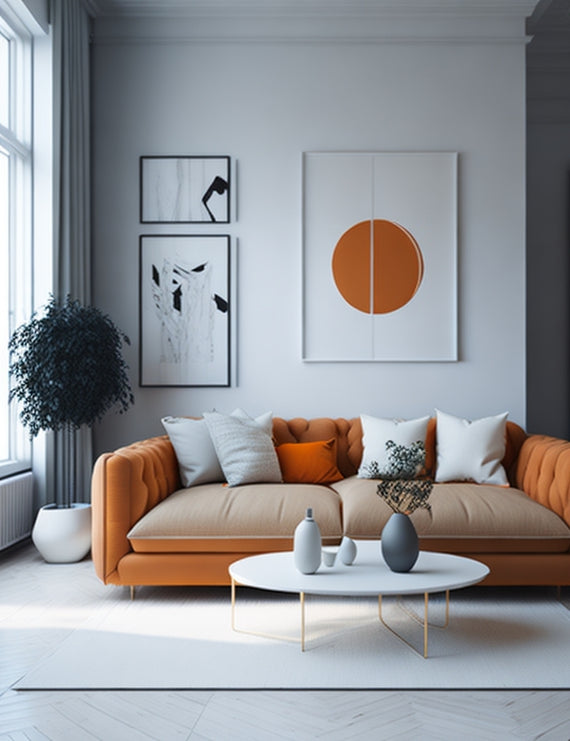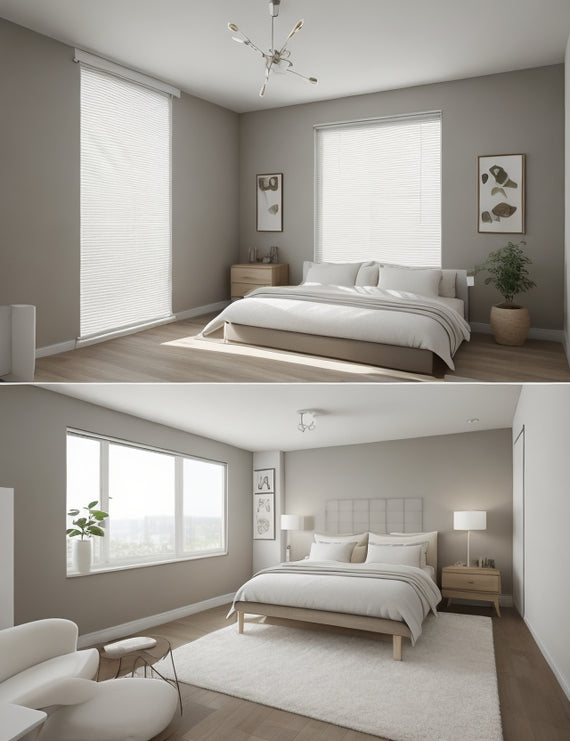7 Mind-Blowing AI Secrets That Will Revolutionize Interior Design in Pakistan by 2023
Introduction
The world of interior design is undergoing a dramatic transformation powered by artificial intelligence (AI). In Pakistan, this revolutionary technology is set to revolutionize the way we approach interior design, from the initial design process to the final touches. In this article, we will explore seven mind-blowing AI secrets that will shape the future of interior design in Pakistan by 2023. From AI-powered design tools to personalized recommendations and energy efficiency, AI is poised to change the game in the interior design industry.
1. AI-Powered Design Tools: The Future of Interior Design in Pakistan
1.1 How AI-Powered Design Tools are Transforming the Industry
AI-powered design tools are changing the landscape of interior design in Pakistan. These tools leverage the power of AI algorithms, machine learning, and computer vision to analyze data and generate design ideas. By automating repetitive tasks and providing designers with intelligent design suggestions, AI is streamlining the design process and saving valuable time.
1.2 Benefits of Using AI-Powered Design Tools in Interior Design
The benefits of using AI-powered design tools in interior design are numerous. These tools can generate design options based on specific requirements and aesthetic preferences, helping designers explore a wide range of possibilities. Additionally, AI algorithms can analyze space and layout efficiently, ensuring optimal furniture placement and room functionality. AI-powered design tools empower designers to create stunning spaces that are not only visually appealing but also functional and efficient.
1.3 Examples of AI-Powered Design Tools for Interior Design
There are several AI-powered design tools available for interior designers in Pakistan. One such tool is provided by Shamo Jee, a leading interior design brand (Learn more about Shamo Jee here). Their AI-powered design tool uses advanced algorithms to generate personalized design recommendations based on user preferences and room specifications. This innovative tool is revolutionizing the way interior designers approach their projects, making the design process more efficient and enjoyable.
2. ChatGPT AI: A Game-Changer for Interior Design
2.1 Understanding ChatGPT AI and its Impact on Interior Design
ChatGPT AI is an advanced language model that uses AI to generate human-like responses in conversation. In the context of interior design, ChatGPT AI can be a game-changer. It enables designers to have interactive conversations with AI, getting instant design suggestions and solutions. This technology opens up new possibilities for collaboration between designers and AI, fostering creativity and innovation.
2.2 Exploring the Capabilities of ChatGPT AI in Interior Design
The capabilities of ChatGPT AI in interior design are vast. Designers can ask AI for recommendations on color schemes, furniture selection, and room layout. ChatGPT AI can understand the context and style preferences, providing personalized suggestions tailored to individual needs. This technology enhances the design process by providing designers with instant inspiration and valuable insights.
2.3 How ChatGPT AI Enables Personalized Design Recommendations in Pakistan
Shamo Jee, in collaboration with ChatGPT AI, offers personalized design recommendations to customers in Pakistan. By interacting with AI, customers can get tailored suggestions for furniture, decor, and color schemes that align with their preferences. This personalized approach revolutionizes interior design in Pakistan, making it accessible and enjoyable for everyone.
3. Augmented Reality and Virtual Reality in Interior Design
3.1 The Role of Augmented Reality in Transforming Interior Design Experiences
Augmented Reality (AR) is revolutionizing the way we experience interior design. By overlaying virtual elements on the real world, AR allows users to visualize furniture, decor, and finishes in their space before making a purchase. This technology bridges the gap between imagination and reality, enabling customers to make informed decisions about their interior design choices.
3.2 Enhancing Interior Design Visualization with Virtual Reality
Virtual Reality (VR) takes interior design visualization to a whole new level. With VR headsets, users can immerse themselves in a virtual environment and experience their future space in a highly realistic manner. This technology enables designers and customers to walk through virtual rooms, test different layouts, and visualize the final result before any physical changes are made.
3.3 How AI-Driven AR and VR Technologies are Revolutionizing Interior Design
The integration of AI with AR and VR technologies is pushing the boundaries of interior design. AI algorithms can analyze customer preferences and spatial data to provide personalized AR and VR experiences. This empowers customers to make well-informed design decisions and allows designers to create virtual environments that accurately reflect their clients' vision.
4. AI-Powered Furniture Design and Customization
4.1 The Rise of AI-Powered Furniture Design
AI is revolutionizing the way furniture is designed in Pakistan. By analyzing trends, customer preferences, and ergonomic principles, AI algorithms can generate innovative furniture designs that are both aesthetically pleasing and functional. This technology enables designers to push the boundaries of creativity and offer unique furniture pieces to their clients.
4.2 Customization Made Easy: Using AI to Create Unique Furniture Pieces
AI-powered customization tools make it easy to create unique furniture pieces. These tools allow customers to personalize furniture designs by selecting details such as materials, finishes, and dimensions. AI algorithms ensure that the customized furniture meets design standards and functional requirements, resulting in one-of-a-kind pieces that perfectly fit the client's space.
4.3 Overcoming Challenges and Limitations in AI-Powered Furniture Design
While AI-powered furniture design offers exciting opportunities, there are challenges to be addressed. Ensuring quality control and scalability in mass production are important considerations. However, with continuous advancements in AI and manufacturing technologies, these challenges can be overcome, paving the way for a future where customized AI-designed furniture is widely accessible.
5. AI-Based Space Planning and Optimization
5.1 Intelligent Space Planning with AI Algorithms
AI algorithms are transforming space planning in interior design. These algorithms can analyze room dimensions, available furniture options, and user preferences to generate optimal layout suggestions. By optimizing space utilization and considering factors such as traffic flow and functionality, AI-powered space planning ensures efficient and well-designed interiors.
5.2 Optimizing Interior Design Layouts with AI
AI can optimize interior design layouts by taking into account various factors such as natural lighting, ventilation, and accessibility. By analyzing spatial data and applying design principles, AI algorithms can generate layouts that maximize functionality and create visually appealing spaces. This technology enhances the design process by reducing guesswork and ensuring optimal results.
5.3 Improving Efficiency and Functionality through AI-Based Space Planning
AI-based space planning improves efficiency and functionality in interior design. By automating the layout generation process, designers can focus on creative aspects and client interactions. AI algorithms consider various constraints and requirements, resulting in designs that not only look great but also enhance the functionality and usability of the space.
6. AI-Enabled Personalized Recommendations for Interior Design
6.1 The Role of AI in Personalized Interior Design Recommendations
AI plays a crucial role in providing personalized interior design recommendations. By analyzing customer preferences, style, and previous design choices, AI algorithms can suggest furniture, decor, and color schemes that align with the client's taste. This personalized approach enhances customer satisfaction and helps designers create spaces that truly reflect their clients' individuality.
6.2 Leveraging AI to Understand Individual Preferences and Styles
AI can understand individual preferences and styles by analyzing data such as past design choices, social media interactions, and online behaviors. This deep understanding allows AI algorithms to provide accurate design recommendations tailored to each client. By leveraging AI, interior designers can create personalized experiences that resonate with their customers on a deeper level.
6.3 Providing Tailored Design Solutions with AI-Generated Recommendations
Shamo Jee's AI-powered design tool offers tailored design solutions to customers in Pakistan. By interacting with AI, customers can receive personalized recommendations for furniture selection, decor, and room layout that align with their preferences and style. This AI-generated advice empowers customers to make confident design decisions and unlocks new possibilities for interior designers.
7. AI-Powered Energy Efficiency in Interior Design
7.1 Reducing Carbon Footprint: AI's Impact on Energy-Efficient Design
AI is contributing to energy-efficient design by optimizing lighting, HVAC systems, and energy consumption in interior spaces. AI algorithms can analyze data such as occupancy patterns, daylight availability, and weather conditions to adjust energy usage and reduce carbon footprint. By harnessing AI's capabilities, interior design can contribute to a more sustainable future.
7.2 Enhancing Sustainability through AI-Driven Energy Management Systems
AI-driven energy management systems are revolutionizing sustainability in interior design. These systems monitor and control energy consumption in real-time, optimizing energy usage based on occupancy, usage patterns, and user preferences. By leveraging AI, interior designers can create energy-efficient spaces that promote sustainability and reduce environmental impact.
7.3 Promoting Green Practices with AI in Interior Design
AI promotes green practices in interior design by enabling the use of sustainable materials, optimizing space utilization, and reducing energy wastage. By integrating AI algorithms into the design process, designers can make informed decisions that align with environmental goals. This technology empowers interior designers and customers to contribute to a greener future.
Conclusion
The future of interior design in Pakistan is being shaped by AI. From AI-powered design tools and personalized recommendations to augmented and virtual reality experiences, AI is revolutionizing the industry. With AI-driven space planning, furniture design, and energy efficiency, interior design is becoming more efficient, sustainable, and personalized. Embracing AI in interior design opens up new horizons for creativity, innovation, and customer satisfaction. Contact Shamo Jee today to experience the power of AI in interior design.












